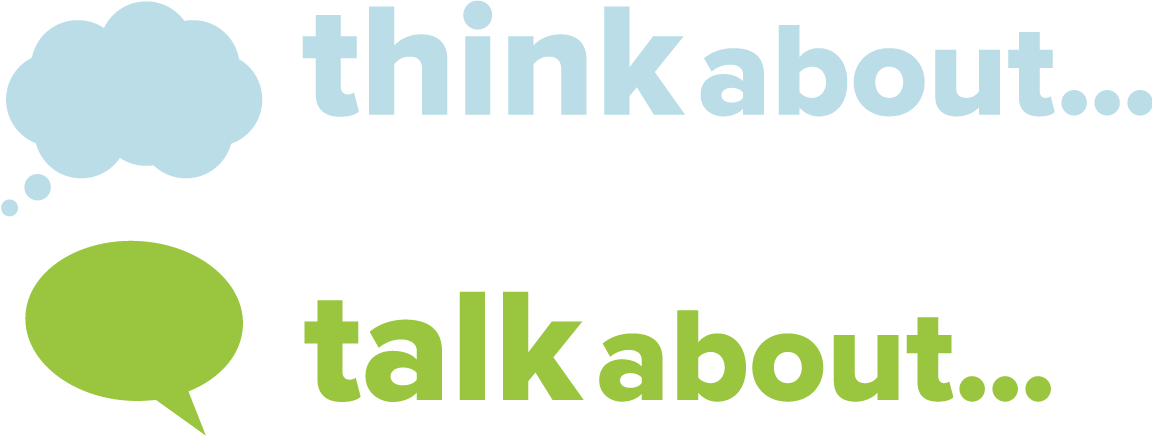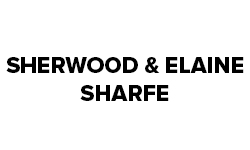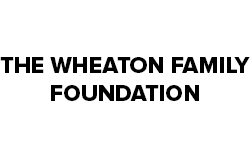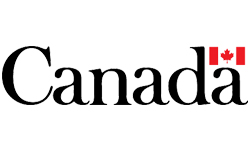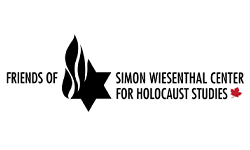Part B: Learning Plan
- Look at decision-making processes in the community and consider:
- Influences on decisions
- The impact of those decisions.
- The effectiveness of those decisions.
- Consider how the environment and land geography affects our choices.
CURRICULAR CONNECTIONS
- Compare how decisions are made in the local community and communities studied. (PA3.1)
Students will look at the decision-making processes in the community and consider the impact of decisions.
- Appraise the ways communities meet their members’ needs and wants. (RW3.1)
Students will consider the effectiveness of communities in meeting people’s needs and wants.
QUESTIONS TO GUIDE INQUIRY
Teachers may want to consider putting the questions into a “Before, During, After” chart to note the changes in students’ thinking as a result of the inquiries.
- What influences your decisions?
- What do you think about when you make a decision?
- How does your worldview / what you believe impact your decisions?
- What does your community government think about when they make decisions?
- How does history influence your decisions?
- What impact does history or the past have on your decisions?
- What impact does history have on current community government decisions?
- What does “Those who cannot remember the past are condemned to repeat it” (George Santayana) mean to you?
- How far reaching are the impacts of decisions? (i.e., Community, province, nation, world, universe)
- Who is affected by your decisions?
- Who is affected by your community government decisions?
- Can all problems be solved the same way?
- What steps do you use in order to solve a problem?
- How do community governments solve problems?
- Do all problems have a solution?
Vocabulary
Worldview
- complex system of ideas a person learns over their lifetime and never really completely
- a person’s worldview are reflected in the way that they act, the choices they make and the stories they tell
- a people’s worldview is at the very heart of their culture because it gives order and meaning to life
Government
- political authority or control granted to a structure or organization that makes decisions on behalf of a group of people
- supervision, authority or command
- management, rule, administration
Leadership
- ability to lead, guide
- make decisions, chose a direction that others follow or on someone’s behalf
Kinds of Leadership
Formal Leadership
- leadership that is given because of a position in a group i.e. teacher in a classroom, older sibling, chief of a First Nation, mayor
Informal Leadership
- leadership that is has not been officially determined but leadership that is given to the person by the members in the group
Inherited
- receive something from your family or relative
- Inherited leadership is leadership that was gained through a family member or previous position without consultation with the group.
Elected
- Chosen by a majority group of people
- Elected Leadership is leadership that was gained because the majority of people have chosen this person to lead them.
Communal
- shared amongst a group of people
- Communal Leadership is leadership that is shared amongst a group of people with common concerns. It can be determined formally or informally.
CONNECT TO TOPIC AND SURFACE STUDENTS’ THINKING ABOUT …
- Pose the essential and guiding questions and allow students to discuss their thoughts on the matter.
- Determine what the students know, understand, need to be able to do to master/answer the essential questions (connect to content). Additional guiding questions can be added as required. Students are encouraged to add their questions to the others.
- Create Know, Want to know, Learned Chart – identify vocabulary that requires development
- Surface any additional questions students might have as a result of their discussions about the essential questions.
- Post student answers for reflection at end of study.
Decision making: Easy or Hard?
Why are some decisions easy to make and others more difficult?
Think about a recent decision you made that was easy. What was it and what made it easy?
Think about a recent decision that was hard. What was it and what made it hard?
- What influences your decisions?
- What do you think about when you make a decision?
- What do your caregivers/parents think about?
- What do teachers, peace keepers, health care workers, others? Think about?
- What do your community leaders/government think about when they make decisions?
In your group develop some guidelines for decision-making. Post group answers, look for similarities, differences. Develop a classroom consensus on the guidelines.
DEVELOPING UNDERSTANDING
Choose a decision and then trace the scope of influence/impact. Chart using chain reaction graphic organizer (see appendix). Identify who makes the decisions and the scope of influence/impact of the decision.
- Family – caregivers, parents, grandparents, older siblings – impacts family members
- Classroom – teacher, student – impacts students, caregivers, parents, teachers
- School – principal, teachers, caregivers, parents – impacts students, caregivers, parents, teachers, principal
- Community leaders – chief, mayor, counselors, – impacts …
What does the decision tell you about the goal/outcome the decision makers were trying to achieve?
With each example have students talk about:
- Kinds of decisions made
- How decisions are made
- What might have influenced the decision
- Who is impacted by the decision (sphere of influence)
- How the result of that decision might be perceived by others. Reinforce earlier discussions about point of view affecting perceptions.
- Process for changing the decision
Students will develop an understanding of different kinds of leadership.
Brainstorm with students the different kinds of leaders in their lives. Chart those identified leaders.
- Using the jigsaw study process have groups of students research the following kinds of leadership.
- inherited leadership
- elected leadership
- communal leadership
- formal leadership
- informal leadership
- Have students apply their learning of the different kinds of leadership by categorizing the identified leaders into a specific category of leadership.
- Have students construct an inventory of examples of leadership in school groups and communities.
Students will practice using decision-making models
- If schools are using a specific decision-making model, it should be examined here.
- Teach and model different forms of decision-making models.
- Health decision making model
– Stop – Think – Do from Sask. Curriculum
Stop Light Graphic
- The red light indicates that students and teachers should STOP to wonder about knowledge within and beyond the classroom. This involves asking compelling questions, reflecting on what is known, and imagining how things might be different. People should also stop to think about how they are feeling about the situation and if they are angry or upset, use deep breathing or counting to ten to calm themselves down before moving forward.
- The yellow light suggests that students and teachers THINK deeply about what they are seeing, hearing, and feeling. This involves gathering knowledge from a wide range of sources for the purpose of comparing ideas, making connections, and shaping new thoughts. Is there something that the person can change about the situation? Is there something that the person could differently? Do they have enough information to make a decision or move forward?
- The green light represents the ‘doing’ part of learning. Students DO by making choices or forming an opinion or making a decision based on what they know and understand. How is the individual going to move forward? What is the impact of moving forward?

- Students will apply what they have learned about decision-making, leadership and governance to consider the processes and impacts of decision-making by community governments. (Connecting to overarching or essential questions)
- Have mayor, chief, counsel members visit classroom to share with students their answers to the following questions in an interview format.
- Have an elder visit the classroom to talk about First Nations connection to the past and the value of connecting to the past as they move to the future.
- Present Stop, Think, Do model and ask them to “talk through” their problem solving process.
APPLY AND EXTEND KNOWLEDGE
- What influences your decisions?
- What do you think about when making decisions?
- What does your community government think about when they make decisions?
- How does history / the past influence your decisions?
- What impact does history have on current community government decisions? (What does “Those who cannot remember the past are condemned to repeat it” (George Santayana) mean to you?)
- How far reaching are the impacts of decisions?
(ie. Community, province, nation, world, universe)- Who is affected by your community government decisions?
- How do you judge/determine the impact of your decisions?
- What steps do you use in order to solve a problem?
- How do community governments solve problems?
- Have students chart examples of ways in which groups and communities make decisions noting similarities and differences and try to determine the kind of leadership practiced by the community government.
- Note examples of how history impacts current decisions in either keeping something the same or deciding to make a change.
EVIDENCE OF LEARNING
- Students will show using a chain reaction graphic organizer a decision that they and/ or their family make on a regular basis (i.e., Grocery store where you buy apples – plot ripple effect showing where money goes.
- Next plot who is supported, who (suppliers involved, growing and country of origin. If you change your decision, how does that change your chain?
- Students will model problem-solving steps for a specific problem as yet unanswered and suggest alternate/two outcomes.
- Students will summarize their understanding of the overarching questions. Students should explain their thinking and give evidence to support their thinking.
- What does your community government think about when they make decisions?
- What impact does history have on current community government decisions?
- Community governments have a responsibility to the people who elected them. How does your community government demonstrate that responsibility?
STUDENT CITIZENSHIP JOURNAL OPPORTUNITIES
Students are encouraged to respond using a variety of genres.
- Write about a specific problem you solved and tell how you think others perceived their solution.
- Was your solution effective? How do you know?
- Would you do something differently next time, why or why not?
- What story does your chosen solution tell about you?
- Would you like to be a leader? Why/Why not?
- What qualities and skills do you have that make you a good leader?
- What would you like to lead?
- Respond to any of the Essential Questions.
Learning Plan
- Identify the ways that communities look after their needs and wants.
- Consider some of the challenges in reaching decisions.
CITIZENSHIP INQUIRY 2
Appraise the ways communities meet their members’ needs and wants. (RW3.3)
Students will identify the ways that communities look after their needs and wants.
QUESTIONS TO GUIDE THE INQUIRY
Teachers may want to consider putting the questions into a “Before, During, After” chart to note the changes in students’ thinking as a result of the inquiries.
- What influences your decisions?
- What do communities have to consider in meeting the members’ needs and wants?
- How does history/the past influence your decisions?
- How does history influence the way communities address meeting their members’ needs and wants?
- How far reaching are the impacts of decisions?
- How far reaching are the impacts of the community’s decisions in trying to meet their members’ needs and wants?
- What story is my behaviour telling?
- What story does the way your community tries to meets its members’ needs and wants tell about their citizenship responsibilities?
CONNECT TO TOPIC AND SURFACE STUDENTS’ THINKING ABOUT …
- Pose the essential and guiding questions and allow students to discuss their thoughts on the matter.
- Determine what the students know, understand, need to be able to do to master/answer the essential questions (connect to content). Additional guiding questions can be added as required. Students are encouraged to add their questions to the others.
- Create Know, Want to know, Learned Chart – identify vocabulary that requires development
- Surface any additional questions students might have as a result of their discussions about the essential questions.
- Post student answers for reflection at end of study.
Who is responsible for meeting your needs?
Could you exist on your own?
- What is the difference between needs and wants?
- Should we get everything we want?
- Should we get everything we need?
- What questions do students have about how the community meets your needs and wants?
Post student thinking for later reflection.
DEVELOPING UNDERSTANDING
Students will develop an understanding of the challenges faced by communities in meeting needs and wants.
- Identify needs/wants – large group
- What are some of the community’s needs?
Brainstorm and search local newspapers with the large group to identify and list issues facing community. Group the needs according to specific categories identified by students (e.g., food and water, shelter, clothing, education, safety).
- How are our needs currently met?
In groups have students consider basic needs and then identify how those needs are addressed. Assign specific area of need (identified earlier) to each group. Present findings to larger group.
- What are some of the community’s wants? – large group
Have students brainstorm and can gather evidence from local newspapers and other media sources. Group the wants under the previously identified categories
Students will develop an understanding that sometimes communities cannot meet all the needs of their residents/members and must look outside the community.
- Throughout the exploration of these questions examine historical recording of events and connect specific points of view/perspectives to worldview.
- Have students reflect on the first interactions between First Nations people and newcomers to Canada
- What was shared and why?
- What sharing arrangements currently exist?
- Have students reflect on the reasons why treaties were negotiated between First Nations people and the British Crown.
- Identify points of view that impacted treaty negotiations.
- What is the history of trying to meet identified Treaty responsibilities/obligations? (i.e., education, health, land sharing, etc.)
- Track how far beyond the community governing members have gone to try to address people’s needs.
- Group efforts according to provincial, federal responsibilities
- What are the different points of view concerning this need/want?
APPLY AND EXTEND KNOWLEDGE
Using the jigsaw study process assign each group of students one of the following organizations:
- United Nations,
- UNICEF,
- Doctors Without Borders
- Any additional groups that students might identify
Identify:
- The mission and function (What they do and how they operate)
- Focus on needs or wants?
- Success rate
- Why are these organizations necessary?
- What story does the behaviour of these organizations tell about global responsibility and global citizenship?
EVIDENCE OF LEARNING
- Describe ways in which communities help ensure basic human needs are met.
- What are the needs/wants of our classroom/school?
- How are those needs being met?
- How can students support the work of the school in meeting community needs?
- Could you exist on your own?
- Who is responsible for meeting your needs?
STUDENT CITIZENSHIP JOURNAL OPPORTUNITIES
Students are encouraged to respond using a variety of genres.
- What does community mean to you? What is community?
- How far should your community government go in supporting your needs and wants?
- Could you survive without your community?
© 2024 Concentus Citizenship Education Foundation Inc. All Rights Reserved.

